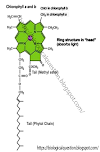ENZYME INHIBITION
The phenomenon in which an enzyme fails to catalyze a reaction is called enzyme inhibition and the
molecules which react with enzyme but are not converted into desired products are called enzyme
inhibitors. In general, the enzyme inhibition is a normal part of the regulation of enzyme activity within
cells but sometimes when external factors cause enzyme inhibition; it may become dangerous for life.
The molecules which act as inhibitors include poisons, cyanides, antibodies, anti- metabolites, penicillin,
sulpha drugs etc. Inhibition may be competitive or noncompetitive.
TYPES OF ENZYME INHIBITION
There are three types of Enzyme Inhibition Reaction:
1. Competitive Inhibition
2. Non-Competitive Inhibitors
3. Feedback Inhibition
1. Competitive Inhibition
A type of enzyme inhibition in which enzyme activity is blocked by the presence of a chemical that
compete with the substrate for binding to the active site is called competitive inhibition. Usually a
competitive inhibitor is structurally similar to the normal substrate and so fits into the active site of the
enzyme. However, it is not similar enough to substitute fully for the normal substrate in the chemical
reaction and the enzyme cannot catalyze it to form reaction products. Competitive inhibition is usually
temporary, and the inhibitor eventually leaves the enzyme hence it is also called reversible inhibition.
This means that the level of inhibition depends on the relative concentrations of substrate and i nhibitor,
since they are competing for places in enzyme active sites. Therefore, if the concentration of the
substrate is increased relative to the concentration of the inhibitor, the active site will usually be
occupied by the substrate. An example of inhibitor is malonate. Succinate dehydrogenase that catalyzes
the formation of fumarate from succinate is competitively inhibited by malonate.
The importance of competitive inhibitors is: (a) It supports lock and key hypothesis. (b) It shows that
substances which are similar to substrate are not acted upon by enzymes. (c) Competitive inhibitors are
used as drugs in the control of bacterial pathogens. Antibiotics known as sulphonamides are used to
combat bacterial infection.

Diagram of Competitive Inhibition
2. Non-Competitive Inhibitors
Non-Competitive Inhibitors
In non-competitive inhibition the inhibitor molecule binds to an enzyme other than active site. The other
binding site of enzyme is called allosteric site. The non-competitive inhibitors inactivate the enzyme
temporarily (reversible inhibition) or they denature the enzyme permanently (irreversible inhibition).
Reversible non-competitive enzyme inhibitors work not by preventing the formation of enzymesubstrate complexes, but by preventing the formation of enzyme- product complexes. So they prevent
the substrate to be converted into product. Feedback inhibition is an example of reversible noncompetitive enzyme inhibition
On the other hand, an irreversible non-competitive enzyme inhibitor destroys enzyme by altering its
shape so that the substrate cannot bind to the active site. The examples of irreversible non-competitive
inhibitors include cyanides and salts of heavy metals. Cyanides are potent poisons of living organism
because they can kill an organism by inhibiting cytochrome oxidase essential for cellular respiration.
They block the action of these enzymes by combining with iron which may be present in the prosthetic
group. Ions of heavy metals such as mercury, silver and copper (Hg**, Ag*, and Cu**) combine with thiol
(-SH) groups in the enzyme breaking the disulphide bridges. These bridges are important in maintaining
tertiary structure. When these bridges are broken, the enzyme becomes denatured and inactive.
Diagram of Non-Competitive Inhibitors
3. Feedback Inhibition
The activity of almost every enzyme in a cell can be regulated by its product. When the activity of an
enzyme is inhibited by its own product, it is called feedback inhibition. This is a type of reversible non-competitive inhibition. This phenomenon is a part of normal regulatory mechanism and usually happens
during the regulation of metabolic pathways. For example, the amino acid aspartate becomes the amino
acid threonine by a sequence of five enzymatic reactions. When threonine, the end product of this
pathway, is present in excess, it binds to an allosteric site on enzyme 1 on this pathway and then the
active site is no longer able to bind aspartate. When all the threonine is consumed in cellular events, the
threonine molecule which is attached to the allosteric site is also removed; the pathway resumes its
activity once again.
Diagram of Feedback Inhibition
Thank you for Reading the article.


%20Competitive%20inhibition%20(b)%20Non-competitive%20inhibition.png)

.png)

.png)
0 Comments